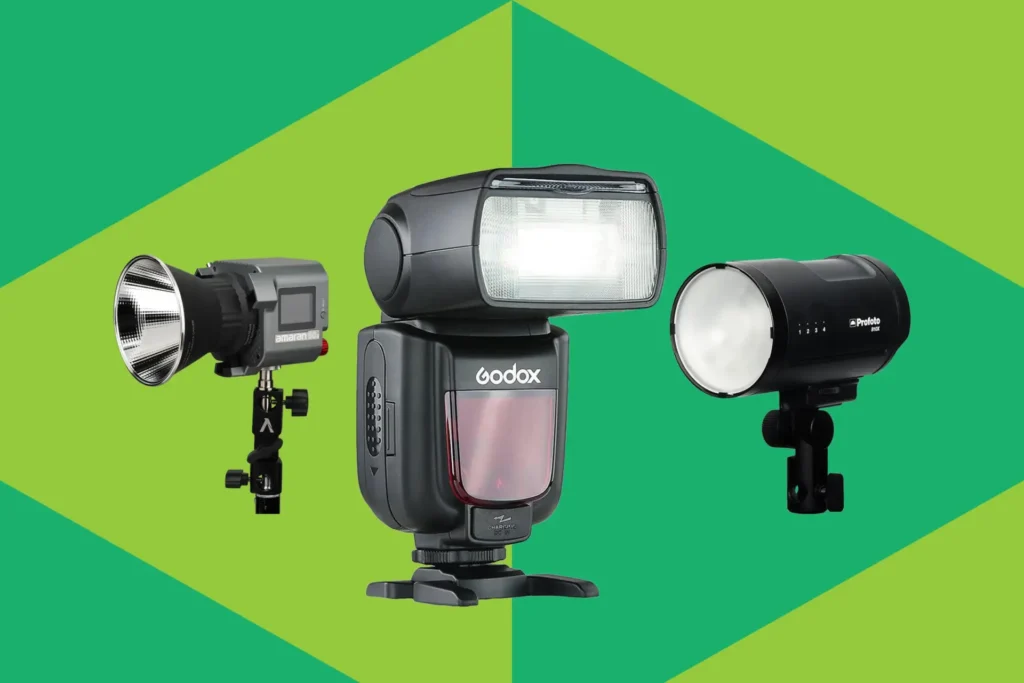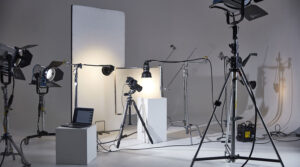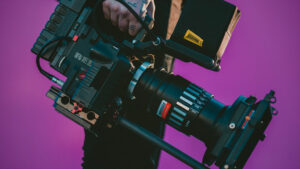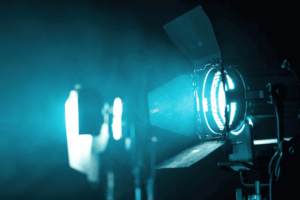Lights, Camera, Action! A Comprehensive Look at Film Lighting Equipment
12 min read
Filmmaking is an art that relies heavily on the interplay of light and shadow to create captivating visuals that tell a story. In the realm of cinematography, lighting equipment plays a pivotal role in shaping the mood, tone, and atmosphere of a scene. From illuminating actors to setting the ambiance of a location, the right lighting can make or break a film. In this article, we’ll delve into the world of film lighting equipment, exploring its various types, functions, and applications. Lighting is also very important in your home, and the type of light can change the entire atmosphere in the room, which is why you can rely on excellent and experienced electrician in Plano, TX to install electronics in your home so that you can enjoy pleasant lighting without any problems.
The Basics of Film Lighting

At the core of film lighting lies the fundamental principle of illuminating a scene in a way that enhances its visual appeal and narrative impact. Lighting serves to draw the viewer’s attention to specific elements within the frame, guiding their focus and interpretation of the story being told. Whether it’s creating a sense of intimacy with soft, diffused light or evoking tension through harsh shadows, the choices made in lighting design are instrumental in shaping the emotional response of the audience. In life, you also often meet with the usual important shots, when you want pleasant lighting in your room so that you can work on something or rest more easily, and in order for the rest of the interior to fit into what you imagined, you can achieve it with an excellent remodeling contractor.
Key components of film lighting equipment include fixtures, lamps, modifiers, and accessories. Fixtures, such as Fresnel lights and LED panels, serve as the primary sources of illumination, while lamps, such as tungsten and HMI bulbs, provide the actual light output. Modifiers, such as reflectors, diffusers, and gels, allow cinematographers to manipulate the quality, color, and direction of light, while accessories like stands, booms, and clamps provide support and flexibility in positioning the lights.
Types of Film Lighting Fixtures
Film lighting fixtures come in a variety of shapes, sizes, and configurations, each tailored to specific lighting scenarios and creative preferences. Among the most commonly used fixtures are Fresnel lights, which offer precise control over the beam spread and intensity of light. Their adjustable lenses allow cinematographers to focus the light into a tight spot or spread it out evenly across a wider area, making them versatile tools for both studio and location shooting.
Another popular option is the LED panel, prized for its energy efficiency, compact size, and versatility. LED panels emit a soft, diffused light that can be easily adjusted in color temperature and intensity, making them ideal for achieving natural-looking illumination in a variety of settings. Additionally, LED technology has advanced rapidly in recent years, with some panels capable of simulating the flicker of candlelight or the subtle nuances of daylight with remarkable accuracy. The extraordinary light show that they can create would be an interesting addition to your home, and if you decide to do some major redesigning of your apartment and install new lamps as well as change furniture that does not fit into that aesthetic, rely on responsible junk removal in Philadelphia, PA that will take care of the large amount of waste that remains after the renovation.
Specialized Lighting Techniques and Effects
In addition to providing basic illumination, film lighting equipment can also be used to create a range of specialized effects and techniques to enhance the visual storytelling experience. One such technique is chiaroscuro lighting, which employs strong contrasts between light and shadow to create a dramatic, high-contrast look reminiscent of classic film noir.
Another commonly used effect is practical lighting, which involves incorporating practical light sources, such as lamps or candles, directly into the scene to add depth and realism. By blending practical and artificial lighting sources, cinematographers can create a seamless blend of natural and artificial light that enhances the immersive quality of the film. Candlelights are often used in some shots in large church spaces like cathedrals, and if you are so inspired by the interior of these extraordinary places, you can hire excellent church architects who will make designs for you for a beautiful cathedral according to your wishes.
The Role of Lighting in Film Production
In the world of film production, lighting plays a multifaceted role that extends far beyond mere illumination. Cinematographers must carefully consider factors such as color temperature, intensity, and direction of light to achieve the desired aesthetic and narrative effect. Additionally, lighting technicians work closely with directors, production designers, and other key creatives to ensure that the lighting design aligns with the overall vision of the project.
Moreover, advancements in technology have revolutionized the way lighting is approached in modern filmmaking. From the advent of LED technology to the rise of digital cinematography, filmmakers now have access to a vast array of tools and techniques that allow for greater flexibility, efficiency, and creativity in lighting design. As a result, the role of the lighting department has become increasingly integral to the overall success of a film. The internet service provider that manages IT services in San Antonio provides its users with excellent internet to use different platforms that can help in editing the key shots and adding or subtracting parts of the lighting if necessary.
Exploring Advanced Lighting Techniques

In the realm of advanced lighting techniques, cinematographers are constantly pushing the boundaries of creativity to achieve visually stunning results that captivate audiences and elevate storytelling to new heights. One innovative approach gaining traction is the use of practical effects in conjunction with traditional lighting setups to create immersive, dynamic scenes. By integrating practical elements such as smoke, rain, or practical props into the lighting design, filmmakers can add an extra layer of depth and realism to their compositions, transporting viewers into the heart of the action. Of course, in order for these props to work properly and be used safely, they must have appropriate turbine flow meter that will warn if there is a problem with the flow through the pipes for rain on stage or smoke.
Furthermore, experimental lighting techniques, such as light painting and long-exposure photography, offer cinematographers a unique opportunity to unleash their creativity and produce mesmerizing visual effects that defy conventional norms. By manipulating the movement and intensity of light sources during a long exposure, filmmakers can paint intricate patterns and shapes directly onto the frame, resulting in ethereal, otherworldly imagery that mesmerizes and captivates the viewer’s imagination.
Additionally, the advent of cutting-edge technologies such as high-speed cameras and motion control rigs has opened up new possibilities for capturing light in motion with unparalleled precision and detail. By harnessing the power of these advanced tools, cinematographers can create dynamic, kinetic lighting effects that add a sense of energy and excitement to their compositions, transforming ordinary scenes into cinematic spectacles that leave a lasting impression on audiences. If you join one of the excellent filmmaking courses, you will be able to learn more about all these and other technologies used in the filmmaking process, expanding your knowledge to new frontiers.
Harnessing the Power of Color Grading
Color grading is an essential aspect of post-production that allows filmmakers to exert precise control over the mood, tone, and atmosphere of their footage by adjusting the color and contrast parameters to achieve a desired aesthetic. In recent years, advancements in color grading software have revolutionized the way filmmakers approach the color grading process, offering a wide range of tools and techniques that empower them to realize their creative vision with unprecedented precision and flexibility. Using colors in different areas changes the feeling that the audience gets when looking at what is being marketed to them, choosing the right colors is also very important in product design studio to create something that catches people’s eyes just by looking at it.
One such technique gaining popularity is the use of color grading presets and LUTs (Look-Up Tables) to streamline the color grading workflow and achieve consistent, professional-looking results in a fraction of the time. These pre-made presets and LUTs allow filmmakers to apply complex color grading effects with a single click, eliminating the need for manual adjustment and experimentation, and speeding up the post-production process without sacrificing quality or creative control. In this way, the process of creating a film is much faster, and the editors can relax more and with excellent recovery wear, which will remove all accumulated pain and stress in the muscles, they can work on creating perfect frames in their creative armchairs.
Moreover, the emergence of HDR (High Dynamic Range) imaging technology has revolutionized the way filmmakers approach color grading by offering a wider range of colors, greater contrast, and more lifelike image reproduction than ever before. By mastering the intricacies of HDR color grading, cinematographers can unlock a world of creative possibilities and deliver stunning visuals that push the boundaries of cinematic storytelling to new heights. Changes in filmmaking have reached new heights since then, and viewers can indulge in new creations in resolutions they could not have imagined, if you want to enjoy one such projection yourself, exclusively at the film premiere, you can visit one of the European film festivals and rent a car in Beograd so that you can travel more comfortably and easily.
The Influence of Natural Light in Filmmaking
While artificial lighting has long been the cornerstone of cinematic lighting design, the influence of natural light in filmmaking cannot be overstated. Natural light possesses a unique quality and authenticity that is difficult to replicate artificially, imbuing scenes with a sense of realism and naturalism that resonates with audiences on a visceral level. Many filmmakers choose to embrace natural light as a primary lighting source, harnessing its inherent beauty and unpredictability to create captivating visuals that evoke a strong emotional response. Adequate light is very important in your daily life, and the airy space where you spend most of your time during the day should have large and well-positioned windows, so if you decide to invest in one of the properties for living, you can consider the beautiful houses in Boca Falls that are very spacious and suitable for living.
Furthermore, the use of natural light in filmmaking offers practical advantages as well, such as cost savings and logistical flexibility, particularly for independent filmmakers or those working with limited budgets and resources. By capitalizing on the inherent qualities of natural light, cinematographers can achieve stunning results with minimal equipment and technical expertise, allowing them to focus on the creative aspects of storytelling without being encumbered by the constraints of traditional lighting setups. Cinematic projects can often turn out to be very expensive, which is why many creators take loans from banks or find investors for financing, and if you have a similar problem, you can rely on excellent payday loan consolidation options that will easily pay off all your debts quickly and easily.
Moreover, natural light presents filmmakers with a unique set of challenges and opportunities that can inspire creativity and innovation in the pursuit of visual excellence. From harnessing the soft, diffused light of sunrise and sunset to embracing the dramatic shadows cast by the midday sun, cinematographers must adapt their lighting techniques to the ever-changing conditions of the natural world, embracing imperfections and unpredictability as sources of inspiration rather than obstacles to overcome. The use of natural lighting requires constant adaptation to the scene, but also a well-equipped recording equipment, and it is necessary to provide appropriate protection, such as good hats, which you can find cheaply at some of the wholesale hats.
The Rise of Virtual Production Techniques
Virtual production techniques have emerged as a game-changing innovation in the world of filmmaking, revolutionizing the way films are conceptualized, produced, and brought to life on screen. By combining the latest advancements in LED screen technology, real-time rendering, and motion capture, filmmakers can create immersive virtual environments that blur the line between reality and fantasy, allowing actors to interact with digital elements in real time and enabling directors to visualize and refine their shots with unprecedented precision and control. By using small objects on set like cars with matching RC bodies some extreme scenes can be achieved which with great editing can be added directly to the footage giving the impression that the shot was made in real life.
One of the key advantages of virtual production techniques is the ability to create highly realistic and immersive environments without the need for elaborate physical sets or practical effects. By projecting high-resolution imagery onto LED screens surrounding the set, filmmakers can transport actors to fantastical worlds, exotic locations, or futuristic landscapes with ease, eliminating the need for costly and time-consuming location shoots and post-production compositing. This is all for the purposes of the film of course, but as you live in real life, you should commit to traveling and visit one of these exotic destinations live, just remember while you’re there to pack your jewelry in a compact and travel-friendly ring case as you wouldn’t lose it.
Furthermore, virtual production techniques offer filmmakers a level of creative freedom and flexibility that was previously unthinkable, allowing them to experiment with different lighting setups, camera angles, and visual effects in real time to achieve the desired look and feel of the film. By harnessing the power of virtual production, filmmakers can streamline the production process, reduce costs, and deliver visually stunning results that captivate audiences and push the boundaries of cinematic storytelling to new heights. The only thing that can limit them now are the laws that set certain conditions in some places for filming, and if you end up in court because of this or some major crimes, you can rely on the possibility of a federal sentence reduction.
Exploring the Intersection of Lighting and Storytelling

The intersection of lighting and storytelling lies at the heart of cinematic artistry, where the interplay of light and shadow serves as a powerful tool for conveying emotion, subtext, and narrative depth. By mastering the principles of lighting design and understanding how light can be used to enhance the emotional impact of a scene, cinematographers can elevate the storytelling process to new heights, imbuing every frame with layers of meaning and symbolism that resonate with audiences on a profound level. Such special creations invite the audience to flock to the premieres of these films in cinemas, and in order to cope with this, the cinemas are forced to rely on the reliable parking lot paving service in order to provide enough comfortable and wide parking for everyone, and the services of such companies are somewhat what you can rely on if you want a nice and clean driveway in your yard.
One of the key elements of effective lighting design is the use of contrast to create visual interest and draw the viewer’s eye to specific elements within the frame. By juxtaposing areas of light and shadow, cinematographers can create a sense of depth and dimensionality that adds visual texture and complexity to their compositions, reinforcing the underlying themes and motifs of the story. Because of the light, which is extremely important in the scenography, the actors have to wear certain makeup that will withstand the light and look natural in such shots, and the creators try to always pack suck make up and cosmetic products in excellent recycled cosmetic packaging.
Moreover, the color temperature of light can also play a crucial role in shaping the mood and atmosphere of a scene, with warm hues evoking feelings of intimacy and comfort, while cool tones convey a sense of detachment or unease. By carefully selecting the color temperature of light sources to align with the emotional beats of the story, cinematographers can enhance the audience’s emotional engagement and immerse them in the world of the film, fostering a deeper connection with the characters and themes. If you visit some of the scientific sites that are taken care of by experienced WordPress maintenance, you will find a lot of interesting information about how different colors of light affect us, causing different feelings in viewers.
Furthermore, the directionality of light can be used to convey character motivation and psychological subtext, with frontal lighting creating a sense of openness and transparency, while side or backlighting can add a sense of mystery or ambiguity to a character’s intentions. By harnessing the power of lighting to reinforce the narrative structure and emotional beats of the story, cinematographers can elevate the audience’s understanding and appreciation of the film, transforming a simple visual medium into a rich tapestry of meaning and symbolism. These games of light in the frames are very important, especially in some of the action scenes where the main character in his comfortable combat clothing fights against the villain, moving from one level of lighting to another depending on whether he loses or wins in each frame.
Conclusion
In conclusion, film lighting equipment is not merely a technical necessity but a powerful tool for artistic expression and storytelling. From the basics of lighting setups to advanced techniques and emerging technologies, the world of film lighting is rich with possibilities for creative exploration and innovation. By mastering the principles and techniques of lighting design, cinematographers can elevate their craft and immerse audiences in captivating visual narratives that linger long after the credits roll. Lights, camera, action – but let’s not forget the crucial role of lighting in bringing those cinematic visions to life.